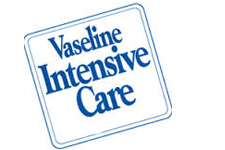CX - Classification - Vaseline Intensive Care Heel Guard is medicament: SC
By TIOL News Service
NEW DELHI, AUG 26, 2015: THE issue involved in the appeal is as to whether Vaseline Intensive Care Heel Guard (for short, 'VHG') is to be treated as merely a skin care preparation or it is a medicament having curing properties. Based on the answer to the question, classification of this product will be determined. If it is only a skin care preparation then VHG is classifiable under Chapter Heading 3304.00 of the First Schedule to the Central Excise Tariff Act, 1985. On the other hand, if it is to be treated as a medicament, VHG would get covered under Chapter Heading 3003.10 of the First Schedule. The rate at which the excise duty is payable depends on the said classification.
Chapter 33 under which the Revenue wants to cover VHG pertains to 'essential oils and resinoids; perfumery, cosmetic or toilet preparations' and, therefore, 40% duty is paid.
If a particular product is to be covered under this Entry, the basic trait of the said product is that it is beauty or make-up preparations and preparations for the care of the skin. Some products like sunscreen and suntan preparations; manicure or pedicure preparations are specifically included, meaning thereby they are to be treated as beauty or make-up preparations or preparations for care of the skin. At the same time, medicaments are specifically excluded therefrom.
On the other hand, as per the assessee, VHG is a medicament and, therefor, it should be covered by Chapter 30. Chapter 30 deals with 'pharmaceutical products'.
The position which is taken by the assessee is that VHG is patent or proprietary medicament and is, therefore, classifiable under Chapter Heading 3003.10 and only 15% duty is paid.
The Supreme Court observed,
While contrasting the two Entries, namely, Entry 3304.00 on the one hand and 3003.10 on the other, it can be discerned that if it is a product for care of the skin, then it would fall under Chapter Heading 3304.00 but if it is for the cure of skin disease then the product in-question would be medicament; meaning thereby the inquiry has to be whether it is a care product or a product meant for cure.
To put it in a nutshell, if a particular product is substantially for the care of skin and simply because it contains subsidiary pharmaceutical or antiseptic constituents or is having subsidiary curative or prophylactic value, it would not become medicament and would still qualify as the product for the care of the skin. There would be certain products which would be purely for the care of skin and certain other products would be clearly medicament and such cases may not pose any problem. The issue of determination as to whether a particular product falls in Chapter 33 or Chapter 30 would arise in those cases where certain products have the shades or qualities of both, namely, skin care as well as cure of skin diseases. In such cases, the necessary exercise requires to be undertaken. Whenever product has curative or prophylactic value as well, but the Department still wants the said product to be brought under Chapter Heading 3304.00, onus is on the Department to show that it is not medicament. For this, it will have to demonstrate that curative or prophylactic value is only subsidiary in nature or that the product is covered by the description under chapter notes 5, namely, either it is chiropody or barrier cream to give protection against skin irritants. If the Department fails to discharge this onus, the product has to be treated as medicament and would be covered under Chapter 30.
Main feature which needs to be taken note of is that small percentage of the ingredients of pharmaceutical constituents would not be a reason by itself to conclude that pharmaceutical constituents are subsidiary in nature. On the other hand, what is more relevant is the purpose for which the product is used, namely, functional test.
The Supreme Court had earlier laid down the guiding principles which are to be kept in mind while determining the classification.
Firstly, when a product contains pharmaceutical ingredients that have therapeutic or prophylactic or curative properties, the proportion of such ingredients is not invariably decisive. What is of importance is the curative attributes of such ingredients that render the product a medicament and not a cosmetic.
Secondly, though a product is sold without a prescription of a medical practitioner, it does not lead to the immediate conclusion that all products that are sold over/across the counter are cosmetics. There are several products that are sold over the counter and are yet, medicaments.
Thirdly, prior to adjudicating upon whether a product is a medicament or not, the courts have to see what the people who actually use the product understand the product to be. If a product's primary function is "care" and not "cure", it is not a medicament. Cosmetic products are used in enhancing or improving a person's appearance or beauty, whereas medicinal products are used to treat or cure some medical condition. A product that is used mainly in curing or treating ailments or diseases and contains curative ingredients even in small quantities, is to be branded as a medicament.
Based on the above guidelines, the Supreme Court observed,
The product in question, Vaseline Intensive Care Heel Guard, is marketed as a solution for cracked heels and it is claimed that this solution is specially developed by the scientists at Vaseline Research. The composition of this product includes salicylic acid I.P. 1.5% w/w. lactic acid 8.0% w/w. Triclosan 0.1% w/w. Cream base - q.s. Salicylic acid is described as keratolytic substance having bacteriostalic and fungicidal properties used in the treatment of fungus infection of the skin. The Tribunal, while deciding that the aforesaid product is a medicament, pointed out that the product was formulated and essentially used for treatment of 'cracked heels', protection from further cracks in the human heels due to extreme climatic conditions and low humidity, constant exposure of feet to water and due to absence of shoe or other protection while walking. It also found that this product was manufactured under a drug licence as drug authorities had treated the same as a medicament. The Tribunal also found that the usage of this product was related to the effect of therapeutic or mitigating substance of prophylactic substances added. Thus, the effect of mitigation of an external condition is primary effect and the effect of smoothing the skin was secondary in nature and, therefore, it was to be treated as a medicament and classified under Chapter 30.
Interestingly, all the aforesaid features of the product are accepted by the Department. However, only on the ground that salicylic acid contained in the product is marginal, the Department took the view that it was a subsidiary substance. Having regard to the exposition of law narrated above, this was clearly an erroneous approach on the part of the Revenue as percentage of the said substance is immaterial to label it as subsidiary.
Another more important factor is that though the burden was on the Department, it did not lead any evidence or produce any material to discharge this onus. It simply went by the pamphlet of the product, that too selectively picking up that portion where the product was described as good for care of the skin as well, ignoring the fact that the same very literature gives more emphasis to the therapeutic value of the product. On the other hand, the assessee had filed various affidavits of the dealers as well as consumers in support of its plea that the product was essentially a medicament, which material was blissfully ignored by the Department.
The Supreme Court concluded that the decision of the Tribunal holding the product in question to be a medicament and, therefore, covered by Chapter Heading 3003.10 is perfectly justified and does not call for any interference.
The civil appeal is, accordingly, dismissed.
(See 2015-TIOL-194-SC-CX)














